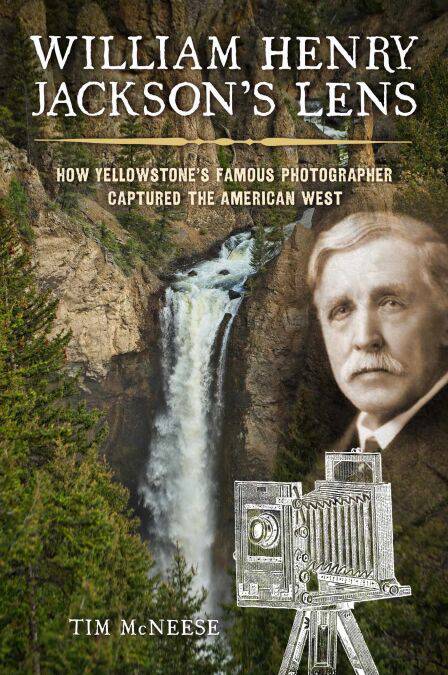
- Afhalen na 1 uur in een winkel met voorraad
- Gratis thuislevering in België vanaf € 30
- Ruim aanbod met 7 miljoen producten
- Afhalen na 1 uur in een winkel met voorraad
- Gratis thuislevering in België vanaf € 30
- Ruim aanbod met 7 miljoen producten
Zoeken
William Henry Jackson's Lens E-BOOK
How Yellowstone's Famous Photographer Captured the American West
Tim McNeese
E-book | Engels
€ 23,48
+ 23 punten
Omschrijving
William Henry Jackson was an explorer, photographer, and artist. He is also one of those most often overlooked figures of the American West. His larger claim to fame involves his repeated forays into the western lands of nineteenth-century America as a photographer. Jackson’s life spanned multiple incarnations of the American West. In a sense, he played a singular role in revealing the West to eastern Americans. While others opened the frontier with the axe and the rifle, Jackson did so with his collection of cameras. He dispelled the geological myths through a lens no one could deny or match. His wet plate collodion prints not only helped to reframe the nation’s image of the West, but they also enticed businessmen, investors, scientists, and even tourists to venture into the western regions of the United States. Prior to Jackson’s widely circulated photographs, the American West was little understood and unmapped—mysterious lands that required a camera and a cameraman to reveal their secrets and, ultimately, provide the first photographic record of such exotic destinations as Yellowstone, Mesa Verde, and the Rocky Mountains.
Jackson’s story was long and his life full, as he lived to the enviable age of 99. This biography presents the good, bad, and ugly of Jackson’s life, both personal and professional, through the use primary source materials, including Jackson’s autobiographies, letters, and government reports on the Hayden Surveys.
Jackson’s story was long and his life full, as he lived to the enviable age of 99. This biography presents the good, bad, and ugly of Jackson’s life, both personal and professional, through the use primary source materials, including Jackson’s autobiographies, letters, and government reports on the Hayden Surveys.
Specificaties
Betrokkenen
- Auteur(s):
- Uitgeverij:
Inhoud
- Aantal bladzijden:
- 296
- Taal:
- Engels
Eigenschappen
- Productcode (EAN):
- 9781493064748
- Verschijningsdatum:
- 14/06/2023
- Uitvoering:
- E-book
- Beveiligd met:
- Adobe DRM
- Formaat:
- ePub

Alleen bij Standaard Boekhandel
+ 23 punten op je klantenkaart van Standaard Boekhandel
Beoordelingen
We publiceren alleen reviews die voldoen aan de voorwaarden voor reviews. Bekijk onze voorwaarden voor reviews.








